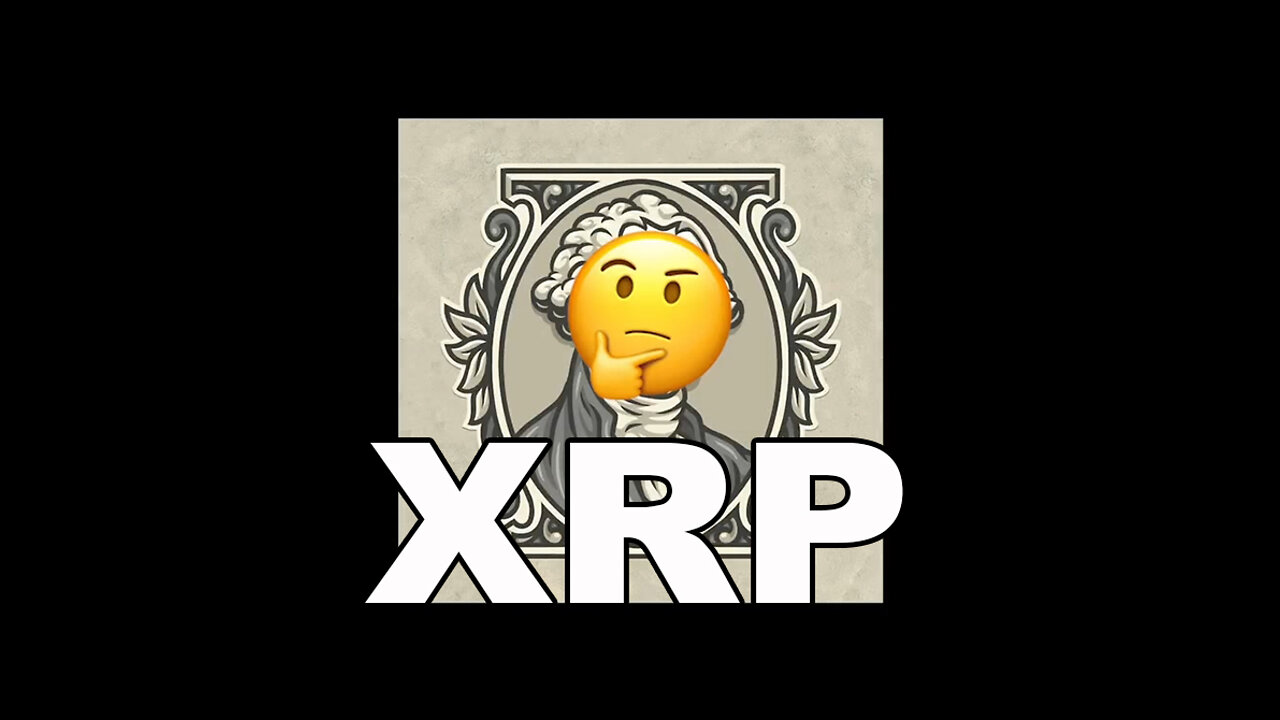Premium Only Content

XRP and Why You Need to Hold It
XRP and Why You Need to Hold It
Oct. 2, 2022
What is XRP token used for?
The XRP cryptocurrency can be used as a bridge currency. This gives financial institutions a cheaper way to trade currencies. They can hold XRP instead of various types of fiat money.
XRP is a cryptocurrency token designed to migrate transactions from central databases controlled by financial institutions to a more open infrastructure while significantly cutting costs. XRP transactions are trustless, instant and cheap, putting them at an advantage for cross-border movements.
Launched in 2012, the cryptocurrency has one of the most ambitious goals in the cryptocurrency space. The software enabling the use of XRP, the XRP Ledger, proposed a new way of operating blockchains that proponents claim is more suitable for transactions.
The Bitcoin blockchain allows anyone to contribute computing power, validate transactions, and secure its software. The XRP Ledger, on the other hand, only allows select network participants to help validate transactions and secure the network. There are over 150 of these participants in the network, collectively known as the Unique Node List (UNL).
At launch, 100 billion XRP tokens were premined and subsequently distributed to specific individuals, companies and the general public through gifts and giveaways. At the time, the move led to concerns surrounding its decentralization, as a few entities controlled a large supply of the coins.
Adding fuel to the fire, XRP’s involvement in the market relies on a for-profit company called Ripple, which to this day acts as the main player in the XRP ecosystem.
Ripple helps maintain the XRP Ledger and plays a pivotal role in its development while being a significant XRP token holder.
Understanding the Difference Between Ripple and XRP
Often, some stories and articles refer to Ripple and XRP interchangeably. It’s important to understand that they are not the same thing: XRP is a cryptocurrency, while Ripple is a for-profit company that helps promote and develop XRP, the software behind it (the XRP Ledger) and numerous other transaction-focused projects. However the company is adamant that the two entities are separate.
Ripple describes XRP, on its website, as “faster, less costly and more scalable” than any other digital asset. It uses the XRP Ledger to “power innovative technology across the payments space.” The firm describes its involvement with XRP in the following way:
“Ripple is focused on building technology to help unleash new utility for XRP and transform global payments. Third parties are also pursuing other XRP-related use cases.”
Ripple was founded in September 2012 under the name OpenCoin, one year after work on what would later become the XRP Ledger had started. In 2013, OpenCoin rebranded to Ripple Labs, before the company finally settled on Ripple in 2015. The XRP Ledger was initially called the Ripple open payments system and moved to the Ripple Consensus Ledger, before becoming the XRP Ledger.
After the XRP Ledger was functioning, its developers decided to gift 80 billion tokens to a private company that would work with the community to support the cryptocurrency. That company, Ripple, claims to have been methodically selling XRP and using it to “incentivize market maker activity to increase XRP liquidity and strengthen the overall health of XRP markets.”
XRP was initially the ticker symbol for “ripples” or “Ripple credits,” but over time, these names were dropped in favor of just XRP to avoid confusion.
What is XRP used for?
Ripple was created to work with the XRP community to boost its use cases. It created numerous offerings over time, allowing the cryptocurrency to be used for cross-border payments, with remittance giants like MoneyGram using Ripple’s products before their partnership ended.
The company has now united all of its XRP-related products into the RippleNet offering, which “offers connections to hundreds of financial institutions around the world via a single API and makes moving money faster, cheaper, and more reliable.”
Through a service that uses XRP to source liquidity during cross-border transactions called On-Demand Liquidity, RippleNet eliminates the need to pre-fund accounts. Remittance players and banking giants like Santander, Bank of America, SBI Remit, American Express and Banco Rendimento use RippleNet.
In short, Ripple’s XRP-powered solution helps network members process payments with real-time settlement and improve payment efficiency and certainty. XRP itself is used to source liquidity on-demand and reduce the amount of nostro accounts required to make global payments.
Ripple also funds the Interledger Protocol, a software platform that aims to facilitate transactions between cryptocurrencies and bank ledgers. The Interledger Protocol does not require the use of XRP, but it can be connected to the XRP Ledger.
Finally, XRP also leverages RippleX, which allows developers and entrepreneurs to integrate blockchain technology into their applications with tools and services built on top of the XRP Ledger. XRP itself can also be used on-chain, as with other cryptocurrencies.
=
Ripple (XRP): A beginner's guide to the digital asset built for global payments
https://cointelegraph.com/altcoins-for-beginners/what-is-xrp-and-what-does-it-have-to-do-with-ripple
-
 DVR
DVR
Bannons War Room
1 year agoWarRoom Live
101M -
 5:42:36
5:42:36
FreshandFit
12 hours agoLive X Censorship For Opposing Immigration?!
119K80 -
 1:08:16
1:08:16
Tactical Advisor
8 hours agoNEW Budget Glocks | Vault Room Live Stream 011
46.5K4 -
 16:30
16:30
SNEAKO
14 hours agoNO FRIENDS IN THE INDUSTRY.
96.9K26 -
 6:19
6:19
BlackDiamondGunsandGear
1 day agoHow Fat Guys can Appendix Carry
66.6K10 -
 6:58
6:58
Gun Owners Of America
1 day ago2024 Was Huge For Gun Rights, Here's Our Top 10 Wins!
55.4K3 -
 15:50
15:50
Degenerate Jay
1 day ago $2.18 earnedJames Bond Is Being Ruined By Amazon? Make Him A Black Gay Woman?
41.4K10 -
 15:18
15:18
DeVory Darkins
1 day ago $17.80 earnedTrump Drops NIGHTMARE Warning on Joe Biden
56.3K100 -
 36:13
36:13
The Why Files
1 month agoAlien Implants Vol. 1: Devil’s Den UFO Encounter: What Was Found Inside Terry Lovelace?
81.1K40 -
 9:03
9:03
Alabama Arsenal
1 day ago $0.77 earnedAAC HUB 2K | Modern Features, Iconic Classic Looks
19.3K1